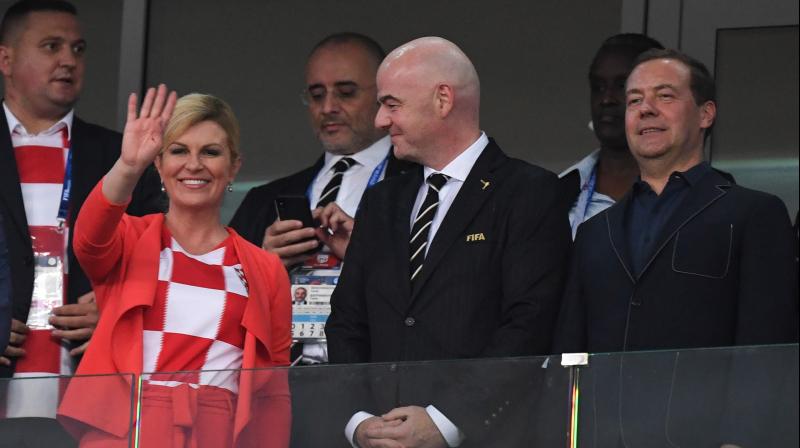1998, 2006, 2010, 2014 and now 2018 – the FIFA World Cup has become a regular phenomenon in belonging to the European nations. The recent domination sees five trophy wins in the last six editions of the coveted tournament all in favour of Europe.
In between this phase, only Brazil (2002) have won the Cup, to highlight that the power has shifted to Europe from Latin American soil. In the ongoing FIFA World Cup 2018, all four sides are from Europe that are competing in the semis, which signifies that a winner will be from this continent only.
European nations have mastered a collective phenomenon in which not just one country is seen going the distance all the time. Like the yesteryear domination of Germany and Italy, the scenario now has changed which often sees a new nation every four years lifting the world’s biggest sporting spectacle honours.
France (1998), Italy (2006), Spain (2010) and Germany (2014) have all conquered the World Cup. This time it could be the likes of Belgium, France, England or Croatia.
Brazil and Uruguay were the only non European sides in the quarters. That means six out of eight nations were all Europeans. And with the former champions’ exit, the math is now simple. The manner in which both sides were beaten in a comprehensive fashion, shows the gap that has come about which separates Latin teams from Europe. So what are the factors?
Do conditions have a bearing?
One can claim that European domination may stem from geography. Whether due to comfort, familiarity, weather or whatever, European teams always win World Cups held in Europe, the sole exception coming when a magnificent teenager named Pele sparked Brazil to glory 60 years ago in Sweden. Besides that European sides have thrived heavily on its soil.
It works the other way, too. When Germany won it all on Brazilian soil four years ago, it was the first time a non-South American nation had won a World Cup staged there. This shows it isn’t just the conditions any more, but that nations from Europe are now getting better in adapting to conditions and making the most out of everything.
European teams have adapted well defensively

Both Belgium and Croatia have never won a World Cup before just like France achieved its first in 1998 and Spain got to theirs in 2010. Over the period, coaches have become more tactically sound, players have adapted well to the demands of the game and the pace in itself has seen a rise in the matches. And by pace here we mean the deadly counter attacks that most team enjoy sitting back often and soaking the pressure.
It’s not just Italy anymore that defend to their strengths. More teams have come up like Denmark and Sweden thriving on the art of defence and eyeing out results in their favour. These sides often pull the plugs on bigger teams. At times when two major teams clash, one side often absorbs all the pressure and then go for the kill. Belgium mastered that against Brazil in this edition in the quarter-finals. Having a sound defensive structure often pays dividends.
In the same manner, Spain a more attacking side couldn’t quite do much with their defence despite star names falling short.
Other continents haven’t had much say
Five-time winners Brazil have been in a dip. Lionel Messi was out-of-sorts for Argentina and another South American giant Colombia got unlucky in penalty kicks. South American fans traveled to Russia in great numbers, but their journeys largely went unrewarded. In 2014, South American sides did have a say in going further, but each of these three nations fell in quarters, semis and then the final respectively.
Asia on the other hand had highlights, but overall they couldn’t quite make it. Japan showed grit and character and were outstanding against Belgium in the round of 16 before blowing a 2-0 lead. South Korea went home early but beat Germany to close out and got a heroic welcome on arrival. Iran gave Portugal all it could could handle on the final match day in the group, while even Saudi Arabia got a win.
It’s normal for Europe to dominate?
The best clubs in world football are all based in Europe. The money, the standard and the best talents are there to be seen. Is it bad for the game? Football’s power base of the sport rests currently in Europe which also sees players from every continent come and ply their trades at European clubs. With time to come, we do not see that changing either.
Although it isn’t all a rollercoaster ride for European nations. They have one of the most difficult paths to qualify for the main event. 2018 saw the likes of Italy and the Netherlands missing out. It receives 13 automatic spots out of 32, but while that is afar higher than any other confederation, it still does not accurately represent how dominant Europe is in the rankings.
The dominance could get more pronounced when the World Cup expands to 48 teams in 2026. By then, the UEFA allocation will be up to 16 teams and one can expect more European sides in knockouts.
The next two World Cups are set to be held in Qatar (2022) and the likes of Mexico, Canada and USA (2026). That’s quite some good news for the non European sides. But as far the current picture has developed, one may again see another European glory.

